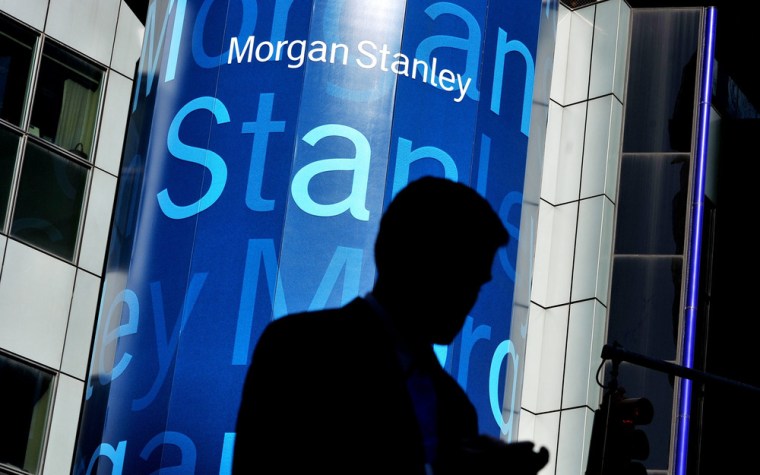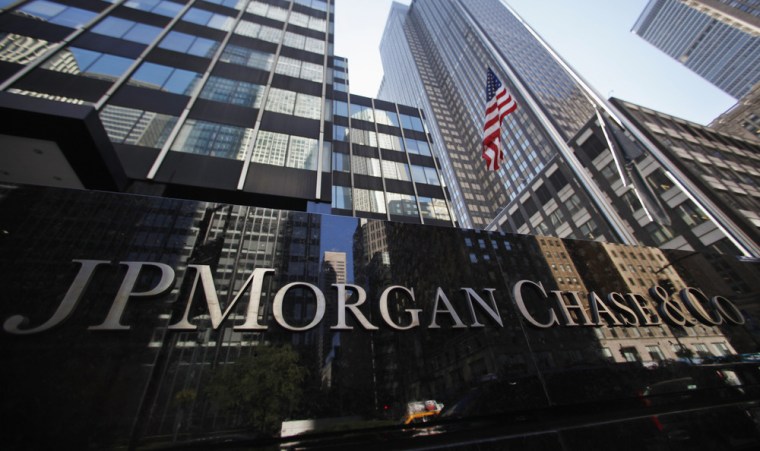
Moody's Investors Service has cut the debt ratings for four big bank holding companies, including Morgan Stanley and JPMorgan Chase, citing its increasing belief that the U.S. government will not bail out the companies if they fail.
The cuts may increase banks' borrowing costs and force them to post more collateral in derivatives trades, weighing on their profits. The downgrades also underscore how regulators are successfully convincing at least some parts of the bond markets that in a crisis, investors in the bank holding companies will likely have to take losses.
The Federal Deposit Insurance Corp has hosted dozens of meetings with bond investors, analysts, and other stakeholders since last year to explain how this scenario would play out. In a statement on Thursday, Moody's Managing Director Robert Young said that the U.S. government's bank regulators have created a credible plan.
With the banks expected to receive less government support, Moody's said it was cutting its ratings for holding companies for Bank of New York Mellon Corp, Goldman Sachs Group Inc, , JPMorgan Chase, and Morgan Stanley by one notch.
Moody's confirmed senior holding company ratings for Bank of America Corp , Citigroup Inc , State Street Corp and Wells Fargo & Co . Representatives of Bank of New York Mellon, Goldman Sachs and JPMorgan declined to comment. A Morgan Stanley spokesman had no immediate comment.
Under the plan created by the Federal Reserve and the FDIC, the FDIC would take over a failing bank holding company, wiping out the bank's shareholders and hitting some bondholders with losses. The steps would keep the operating subsidiaries, such as the deposit-taking banks, alive.

Bond investors and bank executives are watching to see how the liquidation plans might change how banks fund themselves —in particular, how much debt banks might issue from their holding companies, and how much their operating subsidiaries might issue. David Fanger, a Moody's senior vice president, said in an interview that debt from the subsidiaries has become more creditworthy as the government has developed liquidation plans to focus on the holding companies.
The Federal Reserve plans to issue a proposal to require the largest banks to issue minimum amounts of long-term, unsecured debt from their holding companies to absorb losses in a liquidation.
The federal government was forced to bail out a number of major banking and insurance companies starting in 2008, as the world's financial system stood at the brink of disaster. That prompted demands for rules that would prevent a repetition of any situation in which a company would be deemed "too big to fail."
Downgrades often increase a company's borrowing costs over time, but given that banks have so many subsidiaries that can issue debt, the impact of a holding company downgrade may not always be dramatic.
Banks also often have to post more collateral to support derivatives trades when they are downgraded. But because many banks trade the instruments in operating subsidiaries instead of their holding companies, these downgrades may not force big collateral postings.
At a Senate confirmation hearing on Thursday, Federal Reserve chairman nominee Janet Yellen said that "addressing too-big-to- fail has to be among the most important goals of the post-crisis period."
Regulators have acknowledged that one issue with the liquidation plans replacing too-big-to-fail bailouts is how to coordinate actions with authorities abroad when troubled banks have operations in multiple countries. Another issue is, how to liquidate banks if they all fail at the same time and there are few buyers for assets, which can happen during a crisis.
Bank of America and Citigroup holding company ratings were not changed because their underlying strength improved enough to offset Moody's lower expectation of government support. Bank of America's capital strength is better, its risk of major losses is down and its expenses are declining, Moody's said.
Citigroup's balance sheet is stronger and it is more reliably profitable, the ratings agency said.
But Moody's lifted the long-term deposit ratings for both Bank of America and Citigroup's bank subsidiary units.
With the cut, the holding company for Morgan Stanley is now rated the same as Bank of America's and Citigroup's holding companies: Baa2, or two steps above junk status. Goldman was cut to a level three steps above junk, while Wells Fargo remains five steps above. BNY Mellon is six steps above.
Below are the ratings for long-term senior unsecured debt for the bank holding companies. Bank Holding Company New Rating Old Rating Bank of America Corp Baa2 Baa2 Bank of New York Mellon Corp A1 Aa3 Citigroup Inc Baa2 Baa2 Goldman Sachs Group Inc Baa1 A3 JPMorgan Chase & Co A3 A2 Morgan Stanley Baa2 Baa1 State Street Corp A1 A1 Wells Fargo & Co A2 A2